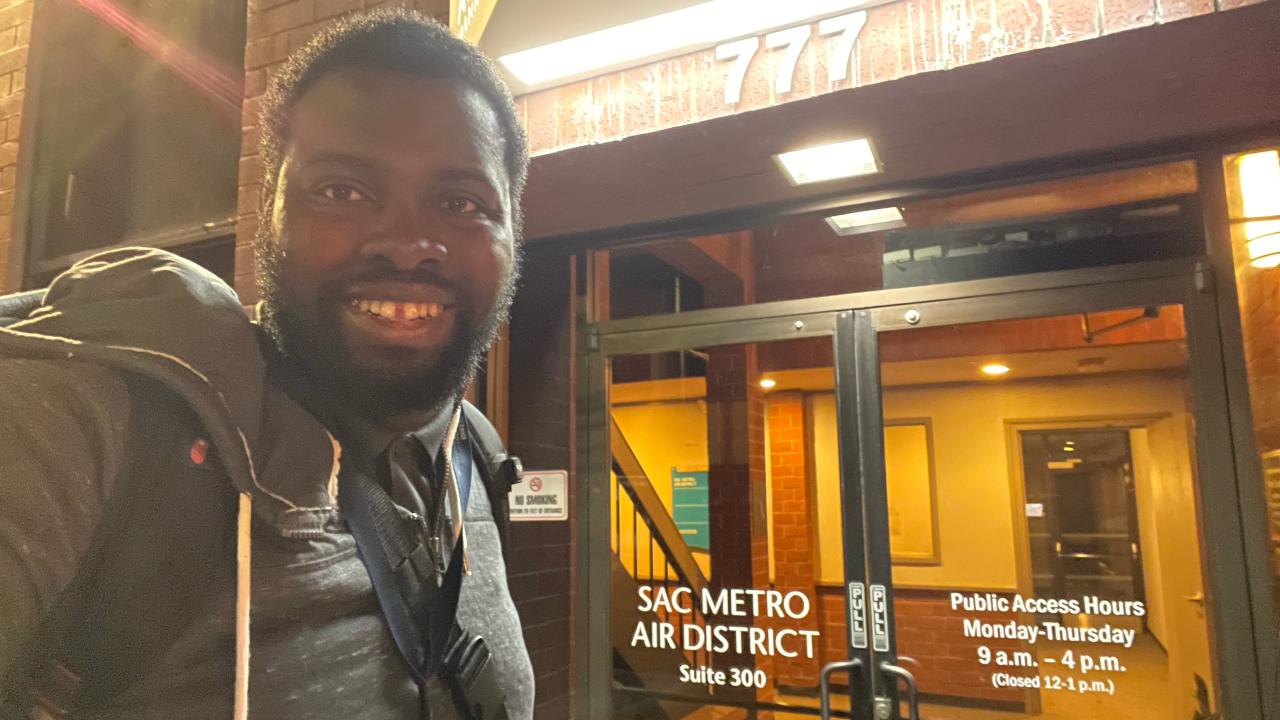
In the Wild: Joel Chima with Sac Metro Air Quality District
Quick Summary
- Joel Chima is a second-year masters student in the Environmental Policy and Management program, specializing in sustainable agriculture and environmental data science.
My name is Joel Chima. I am a Master's Student in the Environmental Policy and Management graduate group, where I am specializing in sustainable agriculture and environmental data science. I have a Bachelor of Science in Environmental Studies and Sustainability from Michigan State University and a minor in Sustainable Agriculture and Food Systems. After graduation, I hope to work as an Environmental Scientist, GIS/Remote Sensing Analyst, or Environment/Sustainability Manager. As part of my Practicum, I worked for the Sacramento Metropolitan Air Quality Management District (SMAQMD) as an Intern in the Department of Transportation and Climate Change.
In California, land use development goes through an environmental review process outlined by the California Environmental Quality Act (CEQA) to determine if such projects have a significant air quality impact. This was done to reduce air pollution, especially ozone formation, which is a key driver of climate change. The northern part of California’s Central Valley known as the Sacramento Federal 8-hour ozone Nonattainment Area (SFNA), is particularly concerning as it experiences more extreme climate fluctuations compared to the coastal regions, causing frequent periods of high pressure and stagnation conducive to pollutant buildup. These climate conditions in the SFNA are at their worst during the summer when ozone levels are high and the interaction between geography, climate, and a mix of natural (biogenic) and anthropogenic emissions poses significant challenges to air quality progress (Loutzenhiser, et al., 2023).
Therefore, the key to protecting air quality is regulating the anthropogenic (precursor) emission sources of Nitrogen Oxides (NOX) and reactive organic gases (ROG)/Volatile Organic Compounds (VOC) released from land-use development projects, as they are major contributors to ozone formation in this region. To achieve this, the Sacramento Metropolitan Air District established the Construction and/or Operational NOX and ROG Thresholds of Significance to determine which of these construction projects might have an adverse impact on air quality.
My goal in this position was to determine whether the Operational Thresholds of Significance for ROG should be updated to reflect the most recent ozone standard and modeling. If development projects exceeds the established NOx and/or ROG thresholds, they must implement an Air Quality Mitigation Plan (AQMP) detailing the project’s scope, emissions exceedances, proposed mitigation measures, and mitigation reductions amounts to ensure emissions remain at or below the thresholds and protective of air quality. Overall, the project plays an important role in improving the City of Sacramento and the State of California’s air quality regulations. This project will also evaluate potential changes to the thresholds and assess if it might cause unintended adverse impacts to certain groups, either by maintaining or modifying them.
